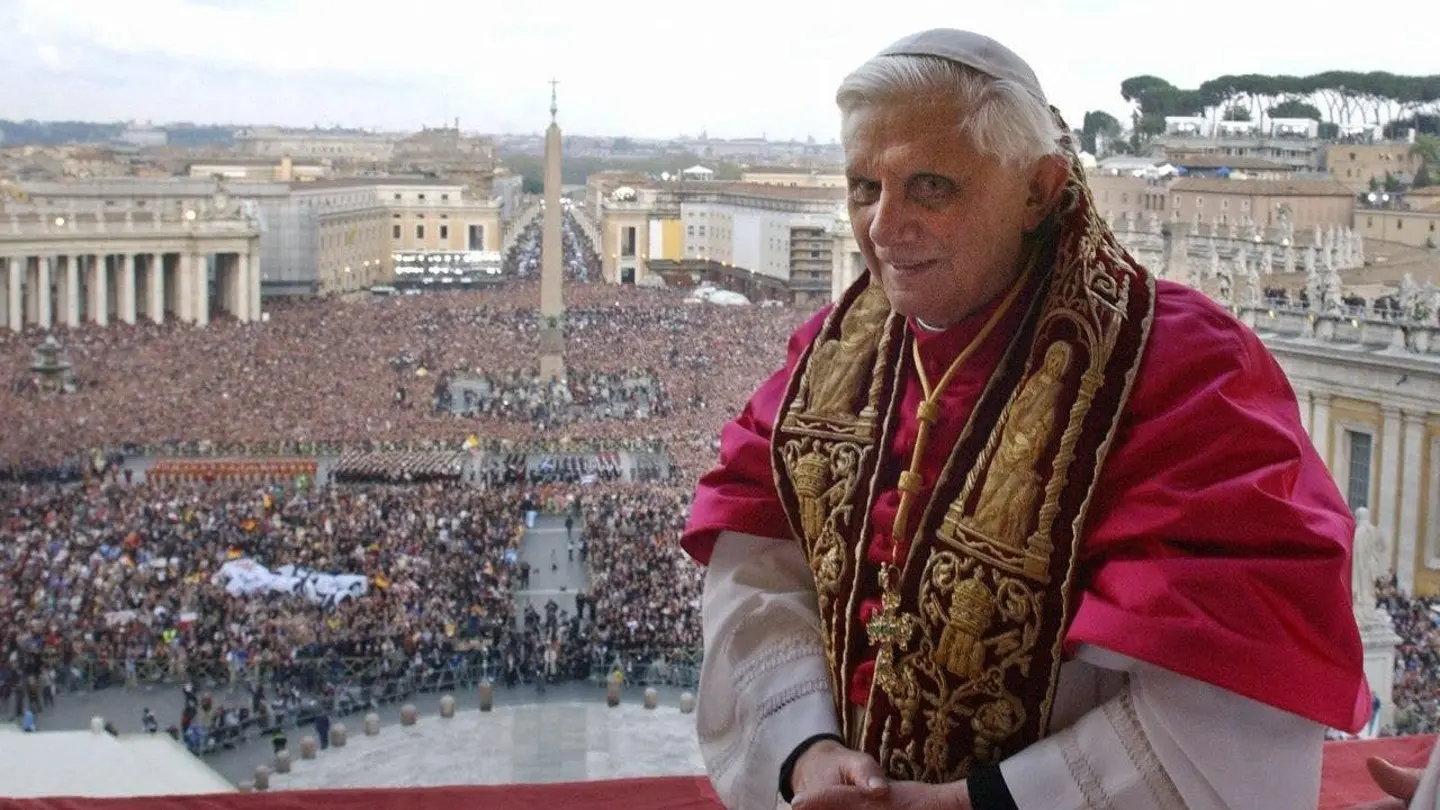Pope Emeritus Benedict XVI dead at 95, Vatican says
By Timothy H.J. Nerozzi , Elizabeth Pritchett | Fox News
December 31, 2022 4:49am
The Vatican announced Pope Emeritus Benedict XVI passed away Saturday morning at 9:34 a.m. He was 95 years old.
He is most immediately remembered outside the Catholic Church for his surprise resignation — the first papal abdication since 1415 — and subsequent life as the world’s first “pope emeritus” in centuries.
Benedict was born Joseph Ratzinger on April 16, 1927, in Bavaria. He came of age in Germany after World War I at the same time the Nazi regime was growing in power.
His Roman Catholic family — harassed and punished by the Nazi Party for their opposition to state policies — shaped his desire to commit to the church.
Ratzinger was inspired to join the priesthood at an early age when he was tasked with presenting flowers to Archbishop Michael von Faulhaber of Munich. Seeing the clergyman’s crimson robes and refined demeanor, the five-year-old Ratzinger declared he would become a cardinal.
“It was the way the cardinal looked, his bearing, and the knickerbockers he was wearing that made such an impression on him,” his brother Georg recalled in a 2005 interview with the New York Times.
At the age of 14, Ratzinger was mandated by law to become a member of the Hitler Youth alongside all other German children of his age group. Ratzinger resented the organization and became horrified after his cousin, who suffered from Down’s syndrome, was abducted and killed by the government as part of their Aktion T4 campaign.
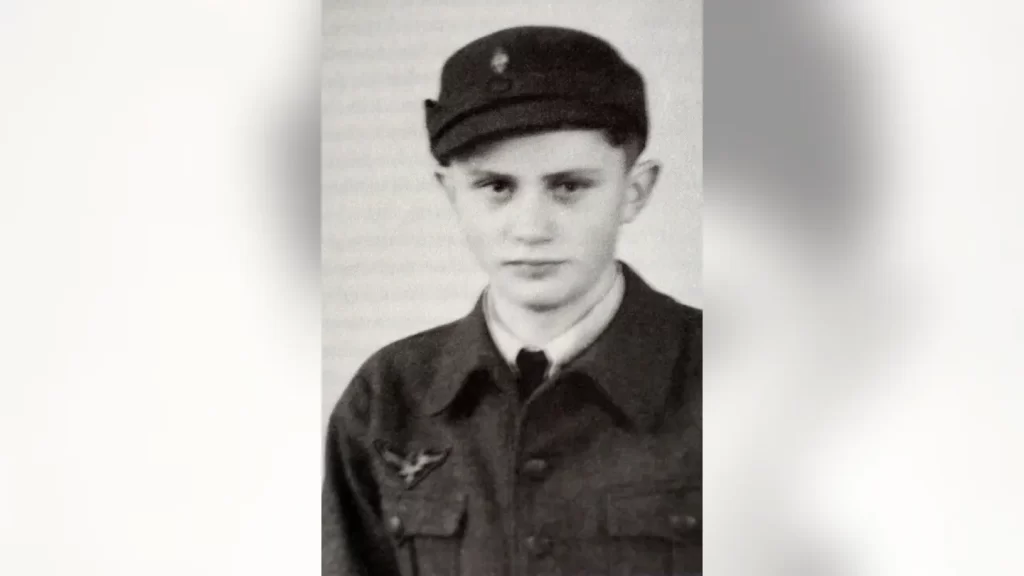
Despite entering seminary, Ratzinger was drafted into the anti-aircraft corps in 1943 and later into the regular military during World War II. He deserted the German military in April 1945.
He was captured and held as a prisoner of war by American forces for several months before returning to Germany and re-entering the seminary with his brother, Georg.

Ratzinger and his brother were ordained on the same day in 1951, receiving Holy Orders from the same cardinal who had inspired Benedict’s decision to enter the priesthood as a child.
His extensive work in theology and Christology saw him promoted to Archbishop of Munich and Freising in May 1977. He was then swiftly promoted to cardinal by Pope Paul VI in June of the same year.
Cardinal Ratzinger built a positive reputation in Catholic circles for his intense scholarship and prolific writing career.
His bibliography — volumes of works that span from his earliest years of the priesthood through his papacy and beyond — includes encyclicals on morality, explorations of the life of Jesus, and retrospective looks at church history.
Perhaps one of his most profound early contributions included founding the theological journal Communio, which became one of the most important journals of Catholic thought in his home country.
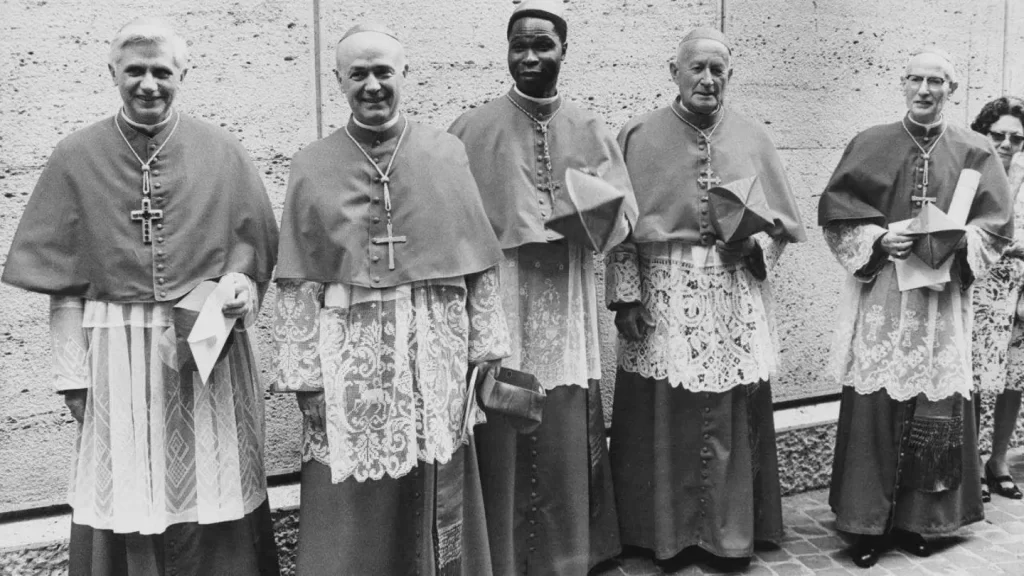
He was also among the vanguard in tackling the issue of sexual abuse in the Catholic Church while serving as a cardinal under Pope St. John Paul II.
Cardinal Ratzinger convinced the pope to withdraw authority from individual dioceses in relation to abuse claims, and instead give jurisdiction to the Congregation for the Doctrine of the Faith.
With John Paul II’s attention, Benedict oversaw the radical transformation of abuse cases and personally pushed for investigations into multiple prelates later prosecuted or forced to resign.

However, critics of Benedict claim he failed to act on four cases of abuse under his jurisdiction while serving as Archbishop of Munich. Benedict apologized for any failures of his archdiocesan leadership, but vehemently denied any cooperation in ignoring abuse until his death.
Benedict was elected to the papacy in 2005. He later claimed that he prayed he would not be chosen throughout the conclave but was forced to accept what he believed was God calling him to greater service.
Benedict faced harsh criticism for blaming the slew of clergy sex abuse scandals on the sexual revolution of the 1960s, growing acceptance of homosexuality, and widespread access to pornography. He held that these radical socio-sexual developments changed the landscape and culture within seminaries, setting the stage for decades of abuse.
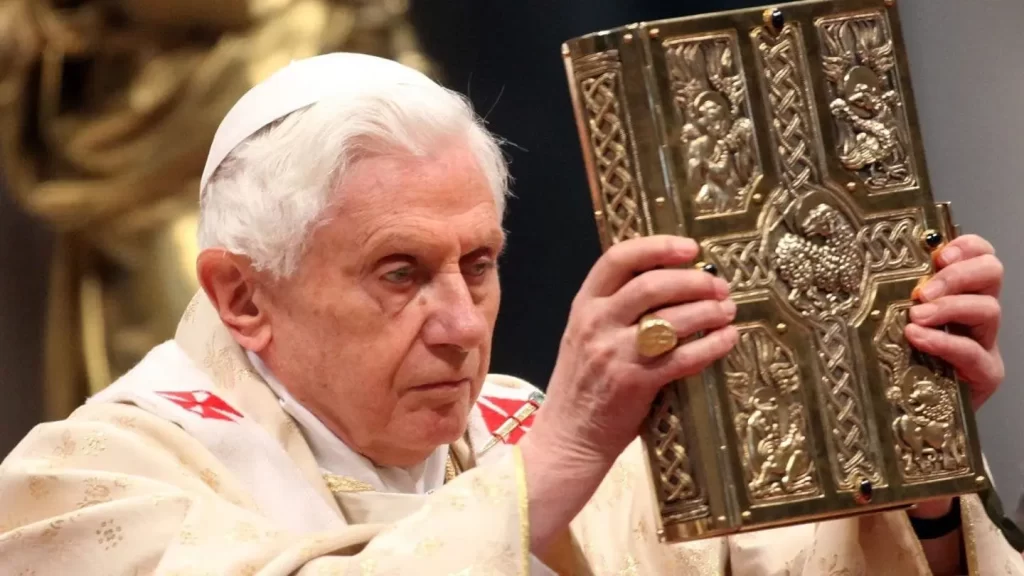
Pope Benedict XVI shows the gospel as he celebrates a mass with newly appointed cardinals at St. Peter’s Basilica, on Feb. 19, 2012, in Vatican City, Vatican. (Franco Origlia/Getty Images)Benedict was known for his sense of pontifical fashion. The pope regularly donned intricate and ornate vestments for mass — some historical, some bespoke. He also resurrected several papal garments that had fallen out of fashion: the mozzetta, a red and white fur mantle; the camauro, a fluffy winter cap; and the leather papal shoes.
His emphasis on beautiful clothing for worship earned him the moniker “The Pope of Aesthetics.” Despite this, he continued the tradition set by his predecessors of forgoing the papal tiara at his investiture.
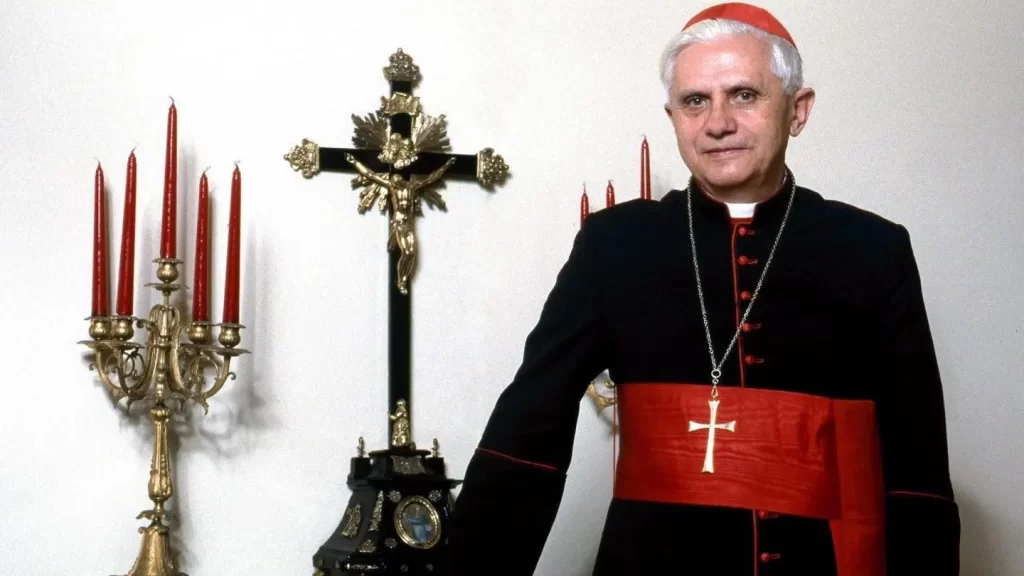
Benedict pushed for greater cooperation and ecumenical dialogue between the Catholic Church and other religions, most notably Islam and Judaism. He also encouraged greater understanding and reconciliation with Protestant churches, despite a firm rejection of Protestant theology.
The pope viewed Christianity as a logical reality that could be studied and slowly understood piece by piece. He expressed approval for the Theory of Evolution, reminding Catholics that science was not at odds with religion and that Genesis was not considered a straightforward text by early Christian communities.
Writings by Benedict throughout his papacy emphasized belief in the dual natures of Jesus Christ — human and divine — and the historicity of the messiah’s life.
In February 2013, at 85 years old, Benedict became the first pope in centuries to resign from his post.
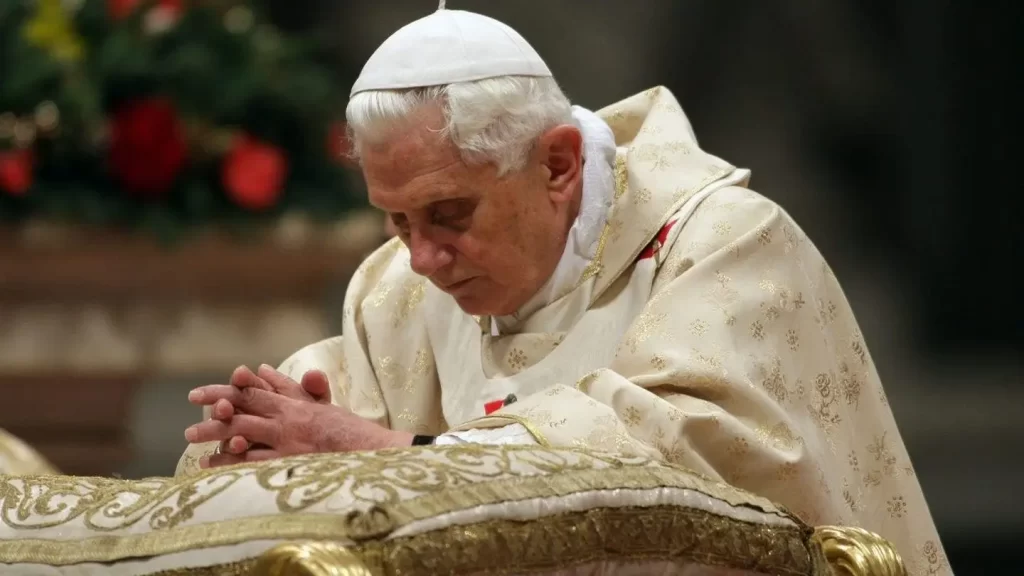
“I have come to the certainty that my strengths, due to an advanced age, are no longer suited to an adequate exercise [of the pontificate],” he said at that time.
The College of Cardinals elected Pope Francis to replace Benedict in the same year after a short Conclave.
From Pope Francis’s ascension onward, the former pontiff went by the title “Pope Emeritus Benedict XVI,” but per canon law, exercised no authority over the church.
The pope emeritus was continually frustrated by a small but vocal contingency of Catholics who refused to accept his resignation.

Small enclaves of hyper-traditionalist Catholics held to the belief that Benedict’s resignation was in some way illegitimate or coerced. Because of this belief, many claimed Francis was an anti-pope, Benedict was the true pope in secret, or both.
Benedict regularly spoke against these “sedevacantist” groups — begging them to accept that his resignation was his own choice and one that he did not regret.
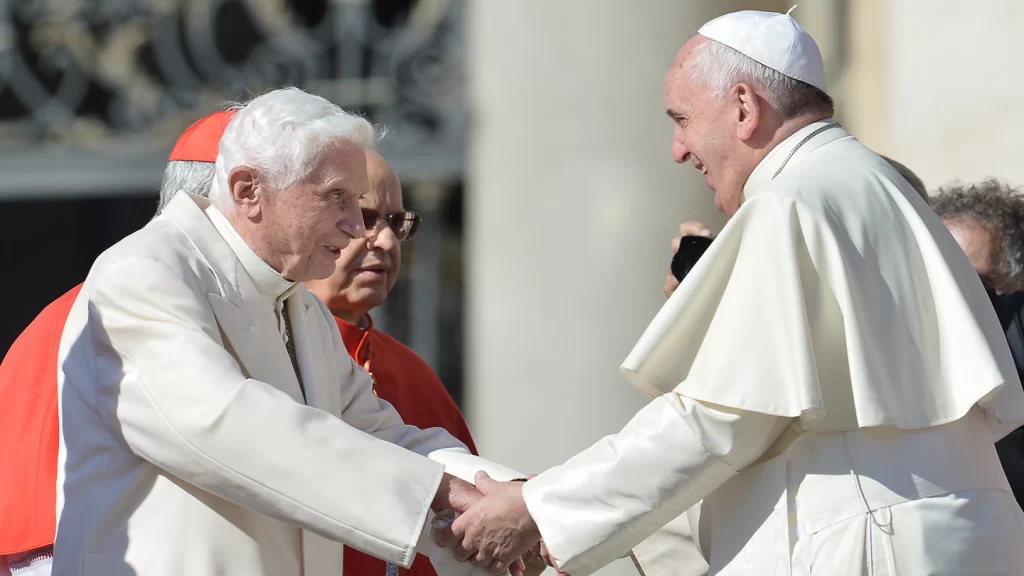
Pope Francis has been a fervent supporter of Benedict and has spoken highly of his predecessor as both a theologian and a priest.
The two have been photographed together frequently, celebrating holy days, and attending events. The pair of popes often prayed together, and Benedict spoke approvingly of his successor in rare interviews.
Benedict even attended Pope Francis’s ceremony appointing 19 new cardinals in 2014.
Benedict lived at the Mater Ecclesiae Monastery in Vatican City following his retirement, where he continued to write and pray until his death.
On June 29, 2021, Benedict celebrated the Platinum Jubilee — 70th anniversary — of his ordination into the priesthood.
The Associated Press contributed to this report.

